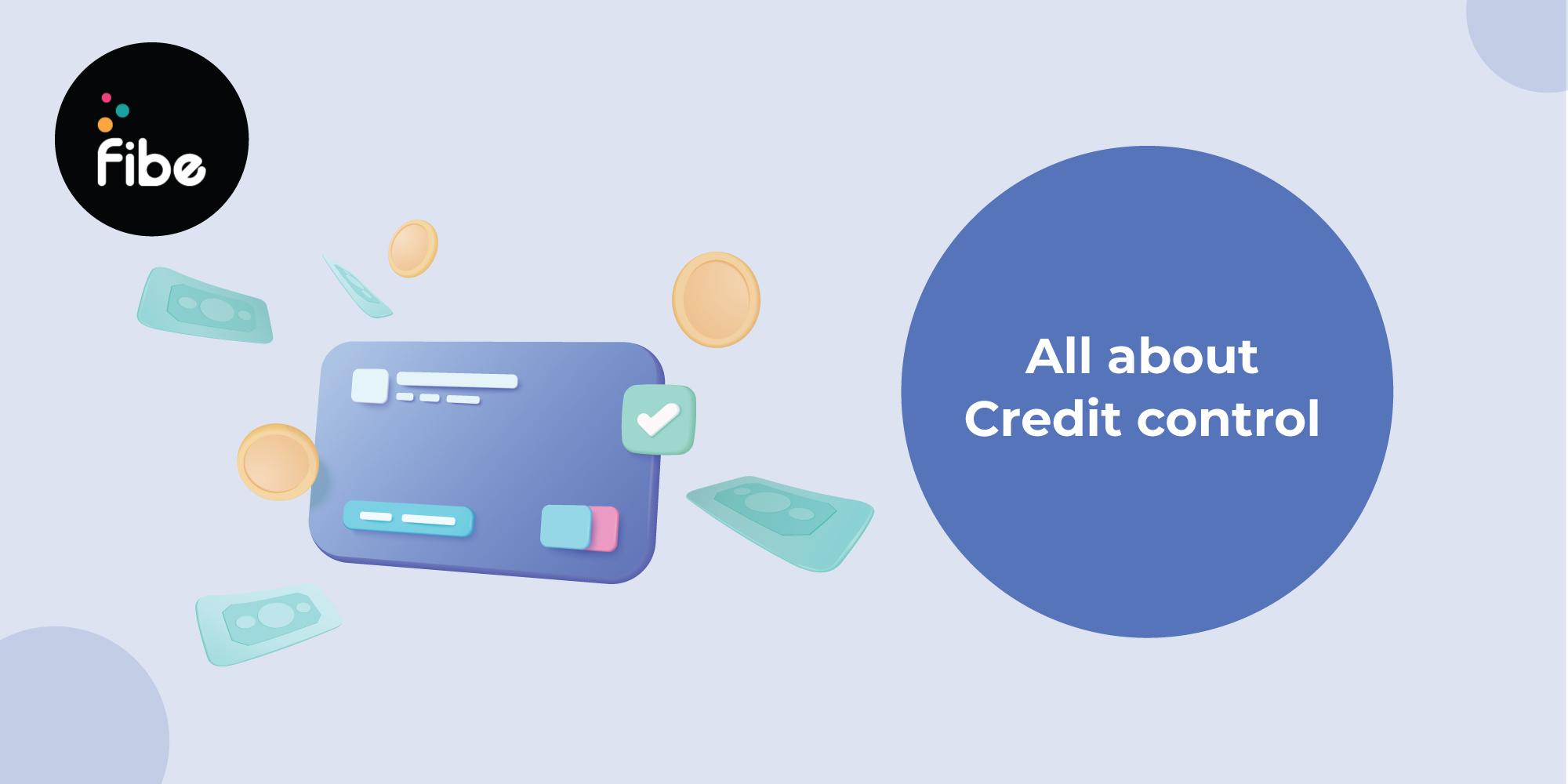- Home
- Blogs
- Credit Score
- What Is Credit Control
Credit Control : Easy Guide for Beginners
Reviewed by: Fibe Research Team
- Updated on: 16 Apr 2025
Reviewed by: Fibe Research Team

Credit control is an essential part of the lending process, used by all financial institutions to mitigate the risk of extending credit. Under this strategy, financial institutions lend funds only to applicants with good credit behaviour and scores. Doing this helps them manage cash flow and the risk of default.
To implement this strategy, lenders analyse your credit profile. So, by understanding what credit control is and how lenders use it to determine your creditworthiness, you can easily boost your eligibility and access affordable credit.
Read on to learn about credit control, how it works, its types, affecting factors and more.
In simple terms, it refers to the policies and practices that financial institutions have to manage and mitigate their risk of lending. Effective implementation of credit control allows lenders to lower the risk of non-payment or default, which will help them manage their cash flow.
Also Read:How to Improve Your Credit Score
This strategy involves lenders initiating certain policies and procedures to sustain their lending. For this, they evaluate whether the borrower can afford the loan. Once the loan gets approved, the following process is to monitor the borrower’s credit behaviour. It also involves reporting the activities to credit bureaus.
To sum up, methods of credit control involve borrowers’ credit assessments, setting credit limits, tracking credit utilisation and taking measures to mitigate risks. This allows lenders to ensure that the borrower adheres to the terms of borrowing and the repayment happens on time.
Now that you know the meaning of credit control, here are its types:
This is the primary process of credit control, as it involves evaluating the borrower’s creditworthiness based on the past credit behaviour. This can include:
Another type of control is defining the terms for lending, such as deciding on a comfortable, affordable interest rate, penalty amount and payment date. This step is important to maintain transparency and facilitate on-time payments from the borrower.
With this type of control, lenders can report any delinquencies, delays and defaults by the borrower. This allows them to effectively manage the risk and take the appropriate steps to avoid financial loss.
This is an essential component involving strategies to recover the loan amount. For example, if the borrower is unable to pay the EMI due to unforeseeable circumstances, lenders can negotiate and adjust the repayment structure. They can also appoint collection agencies to recover the amount. Lenders may even pursue legal actions for this.
This type of control is ideal for protecting lenders against default arising due to bankruptcy, loss of job, health issues, insolvency, or other reasons. With this, they can minimise their loss and maintain cash flow.
In addition to mitigating the risk of lending, the objectives of credit control involve:
Also Check: How To Get 1 Lakh Personal Loan
Although there are many benefits, there are some limitations of credit control. With its implementation, financial institutions may face:
Armed with this information, you can better understand your borrowings. It also enables you to make an informed decision and choose the ideal financing option. If you are looking for affordable and instant funds, you can rely on the Fibe’s Personal Loan.
You can get up to ₹5 lakhs for your umpteen financial requirements, be it planned or unplanned. It comes with an affordable interest rate starting at 2% per month, flexible tenure option and zero pre-closure charges. Download the Fibe Personal Loan App now or apply on our website to enjoy a comfortable borrowing experience.
This strategy involves 5 types of control:
To simplify, it is a strategy that financial institutions employ to manage their risk of lending and cash flow. Under this strategy, they evaluate whether the applicant has good credit behaviour, set the terms for repayment, monitory repayment, employ debt collection measures and insure their lending.
This is a systematic process followed by the lender to manage their lending. It includes evaluating the borrower’s credit profile, setting credit limit, monitoring credit use, tracking repayment and reviewing the account.